Mandy Walker knew she wanted to be a cinematographer from the tender age of 13. It was the only profession that united her deep loves of photography and the cinema so completely. As a child, Walker’s mother nourished her artistic tendencies with trips to the art gallery while her father whetted her appetite for foreign films with regular outings to the State Film Theatre in Melbourne.
Walker now lives and works predominantly in Los Angeles, but over the years she has shot a wide suite of Australian and international content, ranging from feature films to television shows and commercials. Her work includes: Australia, Lantana, Australian Rules, Love Serenade and Shattered Glass and advertisements for big name brands like: Chanel No. 5, Dior, Nike, Bonds, Telstra, Audi and BMW. Walker is enthralled by the collaborative process and loves working alongside talented and inspired directors who push her outside of her comfort zone.
Walker has been nominated and has won multiple awards for her craft both locally and internationally. In 1996, she won the AFI Award for Best Cinematography in a Non-Feature Film for Parklands and in 1997 was nominated for the AFI Award for Best Achievement in Cinematography for The Well.
Still a strong believer in the qualities of film as a capture medium, Walker has also embraced the digital revolution with open arms. When asked what advice she’d give up-and-coming cinematographers, her answer is simple: never stop learning, and be brave. Her favourite period of Australian filmmaking is perhaps indicative of this advice; she cites such films as Picnic at Hanging Rock, Breaker Morant and Gallipoli. These films had a unique cinematic style that went on to redefine Australian cinema internationally.
Read on for more insight into Walker’s early career moves, her working methods and her inspirations. It’s clear she’s been an incredibly self-motivated professional who’s kept extending her skills. Her answers also give great insight into the way each project can lead on to other opportunities.
Mandy Walker is one of our highly regarded AACTA members. We are proud to have film and television makers of this calibre as a part of the new Australian Academy. In coming months, we look forward to sharing more of these profiles as we turn the Member Spotlight onto more performers and practitioners – both those working at home and abroad.
AFI | AACTA: Whereabouts did you grow up and what impact (if any) do you think this has had on the style of your work?
Mandy Walker: I grew up in Melbourne but I don’t think that it has affected the style of my work. I feel like I’ve been more influenced by photography, art and cinema from all over the world. My mother had taken me to galleries from the age of two, and my father to foreign film screenings at the State Film Theatre, when I was at High School. I do think that growing up in Melbourne has influenced my approach to my work. In general, I find most Australians have a great work ethic. They are quite confident yet humble in their attitude towards work, and working relationships.
AFI | AACTA: Where do you predominantly live and work now?
Mandy Walker: I now live in Los Angeles. Most of the commercial work I do is here in town, with some projects overseas. The movies I have shot have been in Australia, and Canada. However, I did recently shoot a telemovie in Boston.
AFI | AACTA: What is your most vivid childhood memory?
Mandy Walker: The most vivid childhood memories I have are of holidays at Australian beaches with my family.
AFI | AACTA: When did you know that you wanted to be a cinematographer and what training did you undergo?
Mandy Walker: I knew from the age of about 13 that I wanted to become a cinematographer. I had always loved photography and the cinema. So for me it was an obvious choice to combine the two. I had a small black and white darkroom that my father set up for me in the back shed and I made a few Super 8 films at High School. In my final year at Preston Technical College, I studied Cinema Studies.
Eventually, by ringing Film Victoria, and a number of producers shooting films in Melbourne, I got a job as a runner on a feature film. I made everyone on that project aware that all I wanted was to get into the camera department. Through these contacts and working for free as a camera assistant on a couple of documentaries and music videos, I got promoted to being a clapper loader and then focus puller on dramas and documentaries. In about five years, I was shooting small projects myself. Looking back, I’m really glad I moved up this way, as I was able to learn from the cinematographers I was working for and develop my own skills alongside them.
AFI | AACTA: You worked as a camera assistant for seven years before gaining the opportunity to shoot docos and short films. How did you get your first big break as a cinematographer and what was the first major project you cut your teeth on?
Mandy Walker: During my time as a camera assistant, I also shot small music videos and student films for students at Swinburne. This was how I really learnt my craft, by actually lighting and exposing film, trying out different ideas, making mistakes, and discovering what worked and what didn’t. Ray Argall offered me my first big break. At that time, he was a cinematographer on features and a cinematographer/director on music videos and documentaries. I had been working on some of his bigger multi camera set-ups for music videos and live concerts as his focus puller and camera operator. When he was to direct his first feature film Return Home (1990) he asked me to be his Cinematographer. I was only 25 years old at the time. I had learnt a lot from him over the years, and it was a great experience to finally step up to the position to collaborate with him as a director.
AFI | AACTA: What is it about the art of cinematography that particularly excites you? What do you enjoy most about your work? What are the worst or most challenging/tedious aspects of the job?
Mandy Walker: I think what excites me most about my job is that it is full of many varied experiences and challenges. I am constantly having to think of new ways to approach ideas or situations and combine them with a certain style, or invent a new one. The worst part of my job is that I am away a lot from home and family. My parents and my sister and her kids, all my relatives, reside in Melbourne. My husband’s family is in Wollongong.
AFI | AACTA: You have worked on a number of critically acclaimed Australian and international films, among them Australia, Lantana, Australian Rules, Love Serenade and Shattered Glass. How do you go about choosing your projects?
Mandy Walker: I definitely have directors that I really want to work with, and that combined with reading a really great script is how I decide. I also never want to pigeonhole myself with a certain genre so I try to read a lot of different ones.
AFI | AACTA: How much input do you typically have in determining the right “look” of a film and how would you describe the communication process between director and DOP?
Mandy Walker: It really varies depending on the relationship I have with a director. I feel I have to be open and adaptive to this. I would never go into a project and dictate to a director: “this is how the movie should look”. Some directors come to me with a very clear idea of their references or vision, which I then interpret into a visual language. It is my job to figure out how I can achieve the director’s vision cinematically, in collaboration with the director then the art department and costume department.
Then there are those directors who come to you with a clear idea of what they want to say in the film, but not a very strong cinematic vision. This process involves searching for and trying out different ideas and reference materials that might appeal to their style of story telling. I will glean [from] art galleries, photography and art books, and other movies to find influential images or scenes that I feel resonate with the story, emotions, and journey of the characters in our film. Depending on the project, this collection of references will vary from one or two key elements to a comprehensive list.
For other directors it’s about how we approach shooting the locations we’ve chosen. For example, with Lantana Ray Lawrence wanted to use natural available light as much as possible to capture the atmosphere of particular locations. He did not want the actors to feel restricted so we used the minimum amount of equipment and lighting. In some interior scenes, it was just the actors and a camera in the room. For a cinematographer, this wasn’t easy as I couldn’t control the light. I always shoot tests before we start a main shoot just to make sure that our ideas work.
AFI | AACTA: Australia was a big budget Australian epic and Baz Luhrmann is renowned for captivating audiences with visually spectacular films. Was this film especially difficult to shoot? What were the most important elements for you in choosing how you caught the action on camera?
Mandy Walker: Baz is a very inspiring director, and one who has a clear vision of his movies before he goes into pre-production. He and Catherine Martin are extremely thorough with their visual presentations of ideas early on. Their historic locations, costume and character references are always very well researched. The visual language of their project starts there. Baz then brings on myself and other key crew to collaborate. Australia was sometimes logistically difficult to shoot but with careful planning and execution we ensured that we were well rehearsed and properly crewed. Overall, it was an exciting project for me to be involved in, and a very positive creative experience.
AFI | AACTA: You’ve won and been nominated for multiple cinematography awards both locally and internationally. For example, you won the AFI Award for Best Cinematography in a Non-Feature Film for Parklands in 1996 and were nominated for the AFI Award for Best Achievement in Cinematography for The Well in 1997, as well as being awarded a number of ACS Awards and the Hollywood DOP of the year in 2008. How does it feel to be regarded so highly by your peers for your craftsmanship?
Mandy Walker: I am very proud and appreciative of this acknowledgement and forever grateful to the people who have given me all my opportunities over the years.
AFI | AACTA: You’ve filmed commercials for a number of big name brands (Chanel No. 5, Dior, Nike, Bonds, Telstra, Audi, BMW etc.) and won numerous awards for your work in advertising, including a Bronze Lion at Cannes Advertising Festival and a Clio Silver Cinematography Award. How does filming a commercial differ to a film?
Mandy Walker: I really enjoy commercials as well as films. Commercials are shorter, more intense than a movie, but always varied. I get to work with many different directors and can often try out new gear, film stock, shooting styles and cameras depending on what the job requires. I also enjoy working regularly with a couple of particular directors, who are very talented and inspiring. Steve Rogers is one Australian director that I try to work with regularly, both in Australia and overseas. I have shot most of my best commercial work with him.
AFI | AACTA: Do you find that you have a greater level of creative freedom to experiment with shooting styles in advertising? Or are you more restricted by branding and/or commercial interests?
Mandy Walker: Again, it really depends on the director and their vision. A director who is talented will be on a project because of their talent. Most agency’s and clients trust them in their execution, and their choice of cinematographer.
AFI | AACTA: What do you think is the greatest challenge or problem facing cinematographers working within the new digital landscape?
Mandy Walker: I think new digital cameras with extra capabilities and an ever increasing workflow is rapidly changing the digital landscape. Cinematographers have to be up to date. We need to consistently be using and testing new technologies to see what the real advantages and disadvantages are.
AFI | AACTA: Do you have a preferred capture medium?
Mandy Walker: It depends on what the project requires. You need to consider what the main objectives and obstacles are; for example, [the need to be] fast and mobile, or shooting in 3D, or the types of lighting required. Basically, I prefer whatever medium best serves the particular “look” that we are trying to achieve. However, I do think that, at this point in time, film is still the most flexible when it comes to creating different looks in-camera. It still has the highest definition, contrast and colour range available, although some HD cameras are now much more sensitive to low light, and are better for night shooting and/or shooting in 3D.
AFI | AACTA: What has been the highlight of your career so far? And is there some other part of filmmaking that you’d still like to try your hand at?
Mandy Walker: The highlights of my career so far would be: being recognised by my peers; being invited into the Cinematographers guild of the American Academy of Motion Picture Arts and Sciences; being accredited by the Australian Cinematographers Society and the American Society of Cinematographers; and most recently becoming a member of the Cinematographers Chapter of the Australian Academy of Cinema and Television Arts.
AFI | AACTA: Can you tell us what you’ve been working on most recently?
Mandy Walker: The last feature I shot was Red Riding Hood. Earlier this year, I also shot a TV movie for ABC America, and since then I have been working on commercials full time.
AFI | AACTA: If you had to name three mentors or sources of inspiration, who would they be?
Mandy Walker: The first would have to be my Cinema Studies teacher at Preston Technical College, Brian Simpson. He introduced to us a whole world of wonderful films, and taught us about the concept of genre, how a director’s cinematic vision can influence the story and create an atmosphere that affects the audience’s experience of the overall film. I still use the movies he showed me when I was 18 as a point of reference for my own ideas.
The second would be Ray Argall for training me in the camera department and giving me the opportunity to shoot his feature length directorial debut. He gave me a strong understanding and appreciation for the collaboration required between a cinematographer and director.
The third would be Jan Chapman. I was orginally involved in working on an episode of her TV series Naked which was directed by Geoffrey Wright. Jan also introduced me to Shirley Barrett and Ray Lawrence whose films I subsequently went on to shoot. She has always been an amazingly positive and collaborative producer and has greatly influenced my career.
AFI | AACTA: Are you often asked to describe what it is like to be a woman and a mother working in the intense and male dominated craft of cinematography? And if so, how do you respond to such a question? Do you resent it?
Mandy Walker: I have never looked at this as an issue in my life or career. I have worked as hard as anybody else in my field and between my husband Stuart and I, we have made sure our daughter Ruby is a big part of our lives and is well looked after. As far as being a woman cinematographer, I see no reason why there are not more of us!
AFI | AACTA: What advice would you give upcoming cinematographers wanting to break into the industry?
Mandy Walker: I think the most important things are to be dedicated, collaborative, amiable, and willing to try new techniques and equipment. Shoot, try and test the ideas you have, discover what works and what doesn’t. Learn from all of this and be brave. You have to grasp each opportunity and never behave like you know everything because no matter how long you have been shooting there is always something new to learn and discover. At the end of the day, you are there with all the other departments to help tell the film’s story.
AFI | AACTA: What are your all time favourite Australian films or television series?
Mandy Walker: My favourite Australian films are Gallipoli, Breaker Morant, and Picnic at Hanging Rock, mainly because I love that particular era of Australian filmmaking. For me they are the original representations of an era of Australian cinematic storytelling.
AFI | AACTA: Thanks for your sharing your time with us.
Are you an AFI | AACTA member? Don’t forget to apply to win one of five signed copies of Australia on Blu-ray by visiting our Giveaways page. Click here to enter.
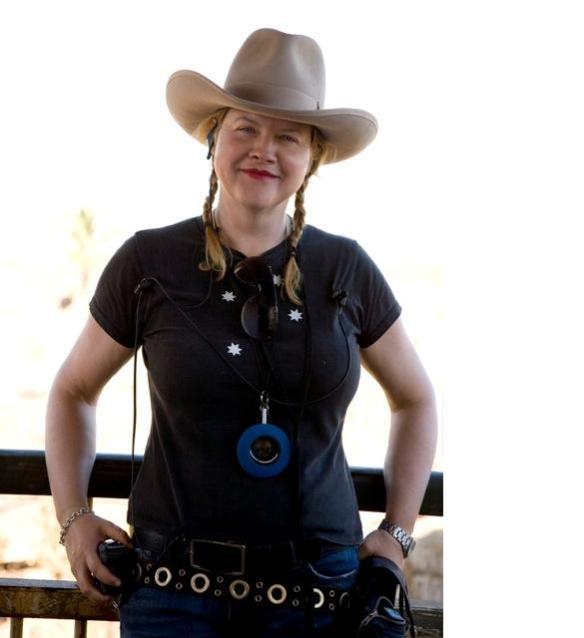
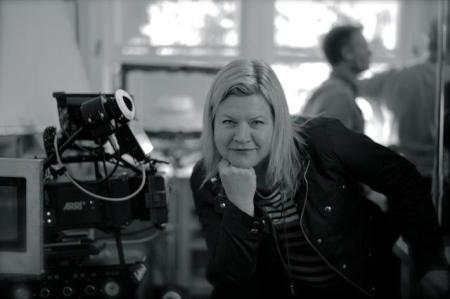
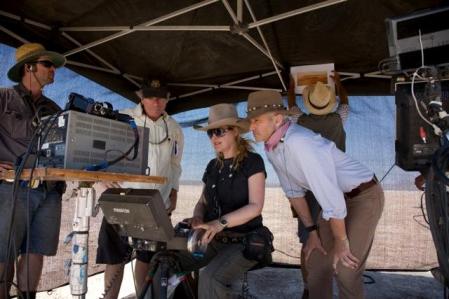
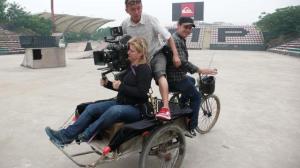
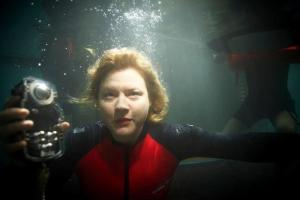
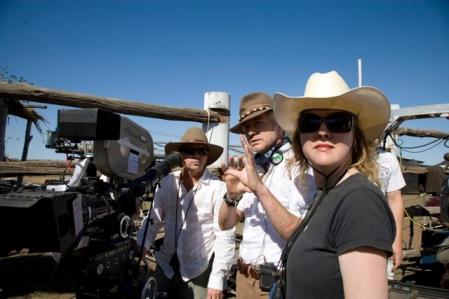


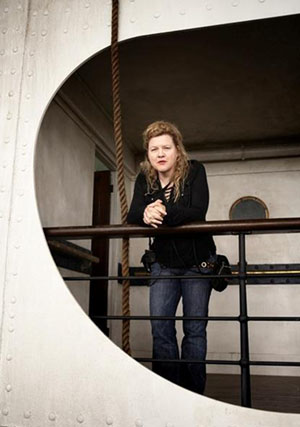
Great interview, inspiring, interesting and insightful. Mandy Walker encapsulates all that is good about film making; a can-do attitude, strong work ethic and appreciation of fruitful and rewarding collaborations.
Thanks very much.